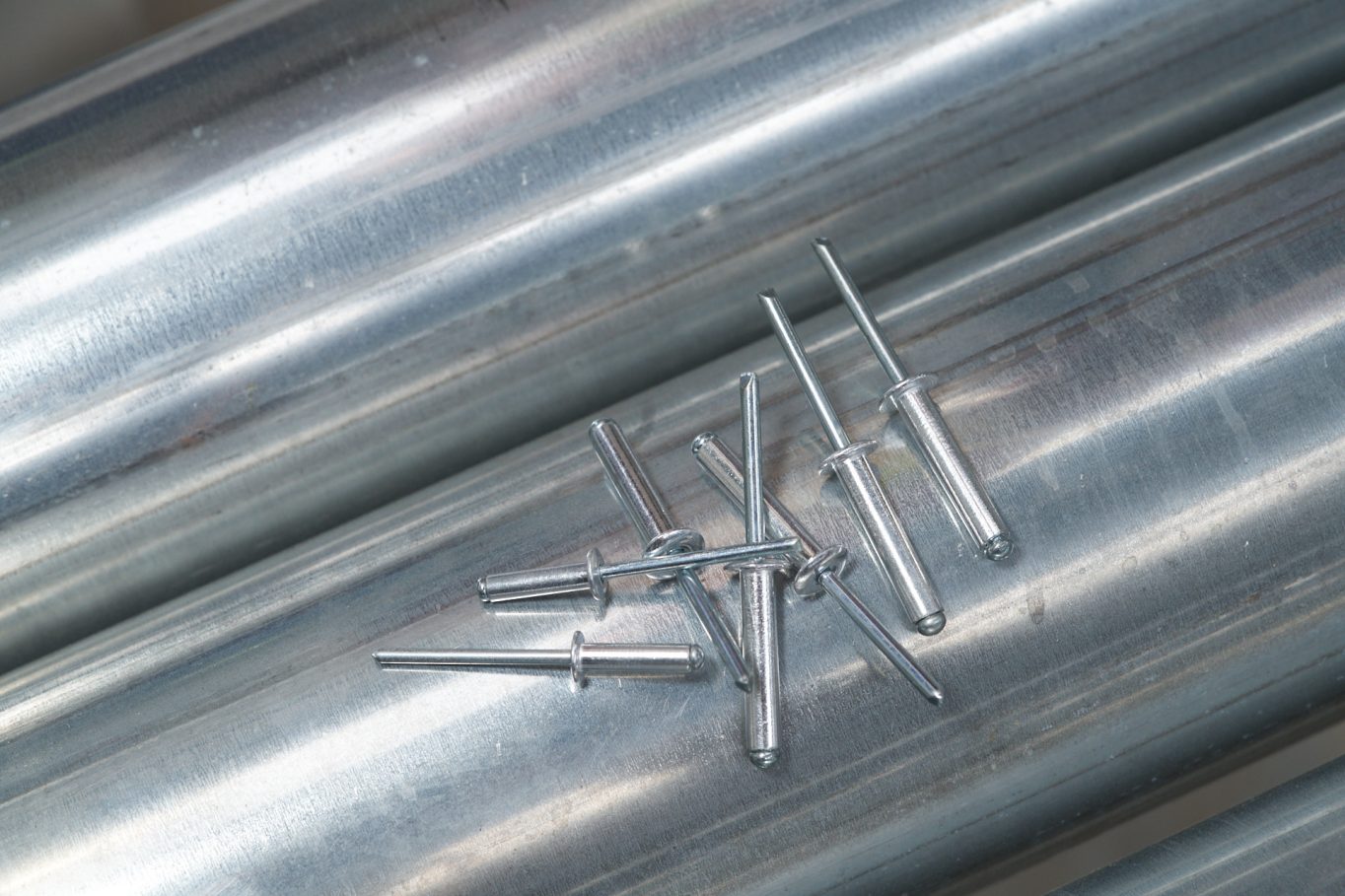
Rivet Nuts – sizes, types, and how to use them
Rivet nuts (blind rivet nuts, rivnuts) are special fasteners that make it possible to create durable, strong, and repeatable threaded joints in thin-walled materials. They are used wherever access to the rear side of the material is limited or impossible—for example in steel structures, sheet metal, or closed profiles. Thanks to their design, they are an excellent alternative to welding and bonding and help avoid deformation of thin parts. Below we present the types, sizes, and ways to use rivet nuts, along with tips on selecting them for different materials and applications.
What are rivet nuts?
A rivet nut is a type of tubular rivet with an internal thread that, once installed in the material, forms a permanent, functional seat for a screw. Its main purpose is to enable assembly in places where access from the opposite side is not possible.
A rivet nut consists of a sleeve with an internal thread and a flange that stabilizes the joint after setting. Installation is performed with a rivet-nut tool, which pulls on the mandrel and plastically deforms the sleeve so it locks in the material. The result is a strong, stable connection capable of carrying significant loads.
Rivet nuts can be used in various materials—steel, aluminium, copper, or plastics. Depending on the base material and service conditions, you can choose a version that provides resistance to corrosion, vibration, or elevated temperatures.
Types of rivet nuts
Rivet nuts differ by base material, flange shape, and body surface/geometry.
The most popular are aluminium, steel, stainless steel, and brass rivet nuts:
- Aluminium – light and corrosion-resistant; ideal where weight matters (e.g., aerospace, automotive).
- Steel – high mechanical strength; suitable for areas subjected to heavy loads.
- Stainless steel – outstanding resistance to rust and moisture; used in food processing, marine environments, and outdoor installations.
- Brass – resistant to galvanic (electrochemical) corrosion; a good choice for assemblies with aluminium components.
Beyond material, flange shape and body design are crucial. Flat-flange rivet nuts are the most universal—ensuring even clamping and stability. Countersunk-flange versions allow the nut to sit flush with the surface for a smooth finish. Hexagonal and knurled bodies prevent spinning in the hole—especially important in thin sheet and under higher loads. Also worth noting are open-end (through) rivet nuts, which allow air or fluid to pass through—useful in ventilation systems.
Shapes / geometries
The geometry determines how the rivet nut works and where it’s used.
The most common are models with a round (flat) flange—universal and easy to set. In areas exposed to vibration or high tightening torques, hex-body rivet nuts are used to prevent rotation in the base material. For smooth materials, knurled bodies improve grip by increasing friction. Countersunk-flange rivet nuts are recessed, providing a flush, aesthetic surface—often chosen in furniture and design applications. Open-end versions have a through core that enables airflow or fluid passage, making them indispensable in HVAC, cooling, and pneumatic systems.
Dimensions
Dimensions determine compatibility with the workpiece and the joint’s load capacity.
The primary parameter is thread size—denoted by “M” and a number (e.g., M3, M4, M5, M6, M8, M10, M12). Larger sizes generally allow higher loads.
Equally important is the recommended hole diameter, which must match the chosen rivet nut—too small makes installation difficult; too large introduces play. Also crucial is the grip range (minimum and maximum material thickness) for which the rivet nut is designed.
For higher demands you can select rivet nuts with an extended body or a larger flange diameter to spread loads over a wider surface. In practice, always follow the manufacturer’s technical datasheet to avoid installation errors.
Applications
Rivet nuts are used wherever a permanent threaded joint is needed in thin material. Their key advantage is one-side installation—no rear access required. This makes them indispensable in construction, automotive, machinery, and furniture industries.
In construction they fasten steel profiles, façade panels, ventilation systems, and roof structures. In vehicles they enable mounting of trims, wheel-arch liners, interior components, or exhaust elements. In furniture and home appliances they create durable, clean joints without welding. Thanks to their variety, they’re also used in electronics, aluminium structures, and lightweight frames—a versatile, efficient method for threaded connections in thin-walled materials.
Which rivet nuts should you choose?
Selection depends on base material, load, and operating conditions.
If low weight and corrosion resistance are priorities, choose aluminium. In moist or chemically aggressive environments, stainless steel is the best option. Where high mechanical loads must be carried, zinc-plated steel combines strength with corrosion protection.
Match the flange style to the application: flat flange for broad bearing area, countersunk for a flush surface, and hex body to prevent rotation in the hole.
Also ensure the thread size matches the screws/bolts to be used—compatible components are essential for a durable, tight joint.
Selecting by material and application
Consider the base material, service conditions, and required load capacity:
- For steel sheet: steel rivet nuts provide a stiff, secure fastening.
- For aluminium: aluminium rivet nuts help avoid galvanic corrosion.
- For plastics or soft metals: choose variants with a larger flange or knurled body to increase grip.
Select the body length to suit the material thickness—too short won’t upset correctly; too long can deform thin sheet.
Installation is done with hand, pneumatic, or battery rivet-nut tools. The tool pulls the mandrel, the body collapses and anchors permanently in the material. After setting, a screw can be threaded in to obtain a strong, repeatable threaded joint.
Correctly chosen rivet nuts deliver high load capacity and resistance to vibration and dynamic loads, making them an indispensable element of modern metal and industrial structures.
- Wood screws – selecting length and thread type - 29 October 2025
- Rivet Nuts – sizes, types, and how to use them - 29 October 2025
- Trust the results — act with confidence - 10 October 2025